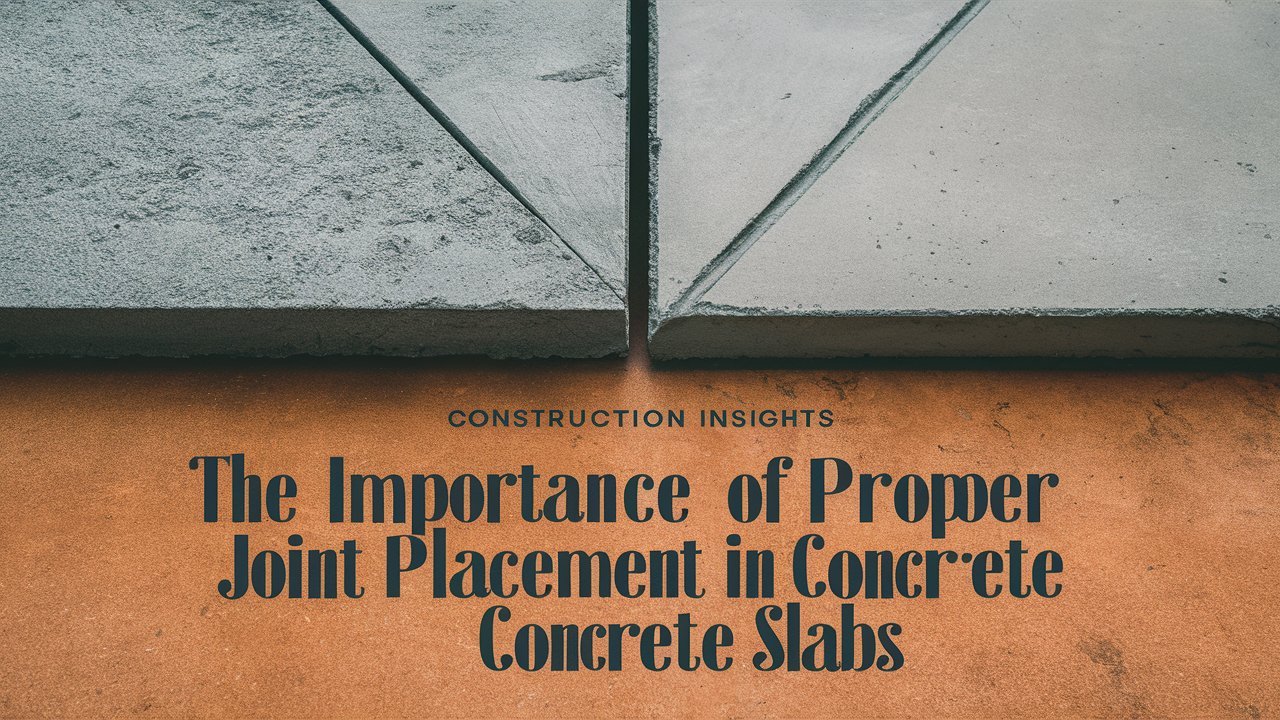Concrete slabs are foundational to many construction projects, providing strong, durable, and versatile surfaces for residential, commercial, and industrial structures. However, without proper planning and execution, even the best-laid concrete slabs can develop issues such as uncontrolled cracking, reduced strength, and long-term instability.
One of the most important factors to ensure the longevity and quality of concrete slabs is proper joint placement. Understanding the role of joints, their types, and best practices for their placement can make all the difference in achieving a flawless, durable surface.
Why Are Joints Necessary in Concrete Slabs?
Concrete, though incredibly strong under compression, is prone to cracking when subjected to stress, temperature changes, or natural shrinkage during curing. Joints help to control where these cracks occur, preventing random, unsightly cracks that could damage both the structure and its aesthetics. Properly placed joints allow for controlled movement and relief of stress within the slab, which is essential for ensuring its longevity.
Key reasons why joint placement is crucial include:
- Crack Control: Joints direct cracking along predefined paths, maintaining structural and visual integrity.
- Stress Relief: They allow for natural expansion and contraction due to temperature changes or curing.
- Improved Durability: Well-placed joints help prevent moisture infiltration and other factors that can weaken the slab.
- Load Management: Joints can facilitate load transfer between sections of the slab, enhancing overall performance.
Improper placement, on the other hand, can result in costly repairs and reduced lifespan of the concrete. This makes joint planning an integral part of the design and construction process.
Types of Joints in Concrete Slabs
To ensure proper joint placement, it’s essential to understand the different types of joints and their functions.
-
Construction Joints
Construction joints are placed where a pour of concrete stops and restarts. These joints are necessary for large projects that require multiple phases of construction.
- Expansion Joints
Concrete expands and contracts with temperature changes. Expansion joints are designed to accommodate this movement and prevent cracking caused by thermal stress.
- Contraction Joints
Contraction joints, also known as control joints, are placed closer together and guide the natural shrinkage of concrete as it cures.
-
Isolation Joints
Isolation joints completely separate the slab from adjoining structures such as walls, columns, or pipes.
Best Practices for Proper Joint Placement
Proper planning and execution of joint placement can prevent many common issues with concrete slabs. Below are some best practices for ensuring optimal results:
Correct Joint Spacing
The spacing of joints must be carefully planned to balance structural needs and visual appearance. As a rule of thumb:
- Joints should be placed at intervals of 24 to 36 times the slab thickness. For instance, a 4-inch thick slab would require joints every 8 to 12 feet.
- Closer joint spacing helps control cracking more effectively, especially in areas with heavy load or temperature fluctuations.
Joint Depth and Timing
- Saw-cut contraction joints should be at least one-quarter of the slab thickness. For a 4-inch slab, joints should be cut to a depth of at least 1 inch.
- Timing is crucial. Saw cutting should occur within 4 to 12 hours after finishing the slab. Delaying the cutting process increases the risk of uncontrolled cracks.
Maintain Panel Dimensions
Panels formed by contraction joints should be as square as possible.
- The long side of a panel should not exceed 1.5 times the short side.
- For even better results, limit the long side to no more than 1.25 times the short side.
Square panels distribute stress more evenly, reducing the likelihood of uncontrolled cracking.
Use Continuous Joint Lines
Contraction joints should be continuous across the slab, avoiding staggered or offset lines. Discontinuous joints can concentrate stress, leading to random cracks.
Consider Environmental Factors
Temperature and moisture levels during curing can affect concrete movement. Joint placement must take these conditions into account to ensure the joints effectively manage stresses caused by environmental changes.
How Concrete Pump Helps with Joint Placement?
When constructing large concrete slabs, precision and efficiency are essential, especially when it comes to placing and finishing the concrete. This is where concrete pumping solutions becomes particularly valuable. Concrete pumps allow contractors to pour concrete quickly, evenly, and with greater accuracy, reducing the chances of improper slab thickness or uneven curing.
By ensuring consistent concrete placement, pumps make it easier to execute joint planning and cutting at the right time.
Benefits of using concrete pump hire in joint placement include:
- Faster concrete pouring, reducing time constraints for joint cutting.
- Greater control over concrete flow, ensuring uniform thickness and finish.
- Accessibility to hard-to-reach areas, which improves joint execution in complex layouts.
When executed correctly, proper joint placement combined with efficient concrete pouring methods creates slabs that are durable, long-lasting, and visually appealing.
Mistakes to Avoid in Joint Placement
To ensure the success of concrete slabs, avoid these common mistakes related to joint placement:
- Improper Joint Spacing: Placing joints too far apart leads to random cracking.
- Insufficient Joint Depth: Shallow joints may fail to control cracks effectively.
- Delayed Joint Cutting: Waiting too long to cut contraction joints increases the risk of uncontrolled cracks.
- Ignoring Environmental Conditions: Failing to account for temperature changes can lead to expansion-related damage.
- Poor Planning: A lack of a clear joint layout results in stress concentrations and structural weaknesses.
The Bottom Line
Proper joint placement is a critical aspect of concrete slab construction, directly influencing the structure’s durability, strength, and appearance. Joints help control cracking, mitigate stress, and enhance the overall lifespan of the slab. Thus, investing time in joint planning ensures concrete slabs perform well under stress while maintaining their visual appeal for years to come.
